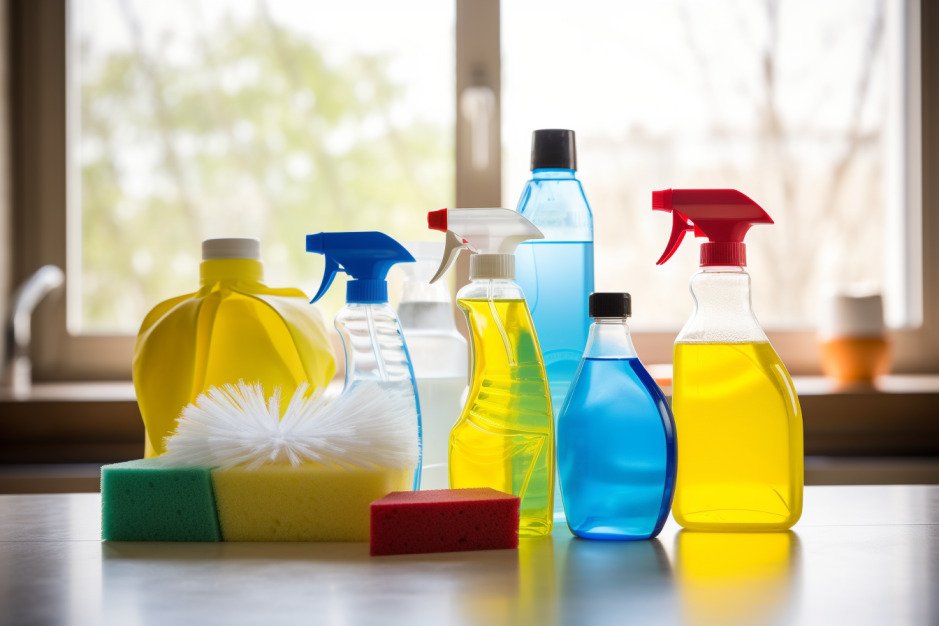Introduction
Living with ADHD often turns the seemingly straightforward task of cleaning into a daunting marathon. The hurdles pop up right from the starting line – what to clean, where to start, how to keep going, and the list goes on. It’s not just about the physical act of cleaning; it’s the planning, organizing, and following through that becomes a Herculean task.
However, a tidy and organized environment is not just an aesthetic choice. It paves the way for mental clarity, reducing anxiety, and promoting a sense of well-being. This guide aims to untangle the knotty challenge of cleaning and offers ten friendly cleaning tips for ADHD to make the journey less overwhelming and more rewarding.
Additionally, we’ve curated a specific guide on managing laundry with ADHD, which is often seen as a cumbersome task.
Understanding ADHD in the Context of Cleaning
ADHD, short for Attention Deficit Hyperactivity Disorder, often feels like having a TV with all channels playing at once. It’s a whirlwind of thoughts, distractions, and a tough grind to stay focused. At the heart of these challenges is the executive function – our brain’s command center that manages our tasks, plans, and behaviors.
When it comes to cleaning, the storyline isn’t just about tackling dust and clutter; it’s a saga of planning the attack, staying on track, and seeing it through the end. ADHD often throws in plot twists like distraction, forgetfulness, or even boredom right in the middle of a cleaning spree.
The common cleaning hurdles like deciding what chores to tackle first, how to stay on course without drifting to other tasks, and how to keep the momentum going, suddenly turn cleaning into a tricky puzzle.
10 Cleaning Tips for ADHD

Creating a Cleaning Schedule
Creating a cleaning schedule is like having a friendly coach by your side. It lays down the game plan – what needs cleaning and when, making the chore journey less of a wild ride and more of a structured pathway. A structured cleaning routine not only provides a clear roadmap but also adds a rhythm to the cleaning choreography1.
Now, about drafting that weekly plan—it’s akin to setting up small, friendly signposts along your cleaning journey. Listing down the chores for the upcoming week acts as a gentle guide, nudging you along without the overwhelm. It’s about grabbing a cozy moment over the weekend, a piece of paper or a digital tool, and jotting down the chores awaiting the week ahead.
This simple act transforms the vast cleaning wilderness into a navigable trail, making it easier to stay on track and chip away at the chores mountain bit by bit2
Breaking Down Tasks
Facing a colossal cleaning task can feel like standing at the foot of Mount Everest. It’s easy to get overwhelmed by the enormity of the chore in front of you. The key is to slice the giant task into smaller, bite-sized chunks. Instead of tackling the whole kitchen, start with clearing the sink, then wipe down the countertops, and so on.
By breaking down the big task into smaller tasks, the cleaning mountain suddenly turns into a series of small, manageable hills. Each completed task brings a sense of accomplishment, fueling motivation to tackle the next one.
Utilizing Visual Aids
Visual aids are like the friendly road signs on the cleaning journey. Whether it’s a chart stuck on the fridge or a handy app on the phone, visual aids provide a clear picture of what’s done and what’s next on the cleaning agenda. They act like gentle nudges, keeping you on track without feeling lost in the chore wilderness.
There’s a variety of tools out there, from simple handwritten charts to digital apps designed to help with task management. For individuals with ADHD, these visual cues can act like a compass, pointing the way and making the chore journey less turbulent. They provide a clear visual snapshot of the progress, which can be motivating and rewarding.
Implementing Timer Techniques
Timers are like the friendly referees in the game of cleaning. They set clear start and end points for each cleaning sprint, making the task at hand feel less endless. By setting a timeframe, say 20 minutes to declutter the living room, it’s easier to stay focused and keep the cleaning momentum going1.
Also, using timers can create a sense of challenge, turning the cleaning task into a mini race against time. It’s about setting a timer for a specific task, say vacuuming, and trying to complete it before the timer goes off. This timer technique can add a fun spin to the cleaning routine, making chores feel less like a drag and more like a game2.

Practicing Mindful Cleaning
Mindful cleaning is about being in the moment, turning chores into a kind of meditation. It’s not about rushing through to get it done; it’s about engaging with the task at hand. Feel the warm water as you wash the dishes, notice the way the soap bubbles form, and listen to the sound of the vacuum as it hums along.
This practice can transform cleaning from a dreaded task into a more calming and mindful experience. It’s a gentle shift from mind-full to mindful, making cleaning a more pleasant and less stressful endeavor.
Utilizing Auditory or Visual Cues
Auditory or visual cues can act like friendly reminders in your cleaning journey. They help in transitioning between tasks or signaling the start or end of a cleaning session. For instance, setting a particular upbeat song to signal the start of cleaning can turn chores into a more enjoyable activity. Similarly, visual cues like a flash of a timer or a notification on your phone can signal it’s time to switch tasks or take a break. These cues help structure the cleaning routine and add a rhythm to the chore dance, making it easier to stay on track and maintain momentum.
Embracing Technology
In this digital age, technology can be a loyal ally in the cleaning quest. There are numerous apps and gadgets designed to assist individuals with ADHD in managing cleaning chores. From reminder apps, timers, to visual scheduling tools, technology offers a range of supports to make cleaning less daunting.
Utilizing tech tools can simplify the process of planning, scheduling, and executing cleaning tasks. These digital aids provide clear, organized, and easily accessible chore lists, reminders, and progress trackers.
The benefits extend beyond just cleaning; they contribute to creating a structured and organized environment, fostering a sense of control and accomplishment.
Creating a Supportive Environment
Seeking Support
Having a support system isn’t about having someone to clean up for you; it’s about having a team cheering you on as you tackle the chores. Whether it’s a family member, a friend, or a supportive community online, having folks who understand the challenges and celebrate the victories, no matter how small, can be a big morale booster.
Positive Reinforcement
Positive reinforcement is like having a friendly pat on the back each time a chore is completed. It could be a small reward like a break, a treat, or some time spent on a favorite hobby.
Celebrating small wins creates a positive association with cleaning and motivates to keep the momentum going. It’s about building a sustainable cleaning routine that doesn’t feel like a drag but a rewarding endeavor.
Addressing Common Setbacks
Everyone faces setbacks, but for individuals with ADHD, it can feel like hitting a brick wall in the cleaning journey. It’s essential to acknowledge that setbacks are part of the process.
Identifying common roadblocks and having a strategy to overcome them can turn a setback into a setup for a comeback. Whether it’s distraction, procrastination, or fatigue, having a plan to address these hurdles makes the cleaning routine more resilient and less frustrating.
Implementing Clutter-busting Strategies
Clutter is like the arch-nemesis in the cleaning narrative. Implementing strategies to keep clutter at bay can significantly ease the cleaning load. Clutter-busting strategies could include having designated places for common items, using storage solutions to keep things organized, and adopting a “one in, one out” policy to manage possessions.
These strategies aim to maintain a cleaner and more organized environment, making daily cleaning chores less daunting and more manageable.
Conclusion
This guide has ventured through the realm of ADHD-friendly cleaning tips, aiming to turn the dread of cleaning into a more manageable, and perhaps even enjoyable task.
By understanding the unique challenges individuals with ADHD face and employing strategies like creating a cleaning schedule, breaking down tasks, using visual aids, and embracing technology, cleaning can become less of a menace and more of a friend.
It’s all about finding what works best for each individual, experimenting with different strategies, and celebrating the small victories along the cleaning journey.